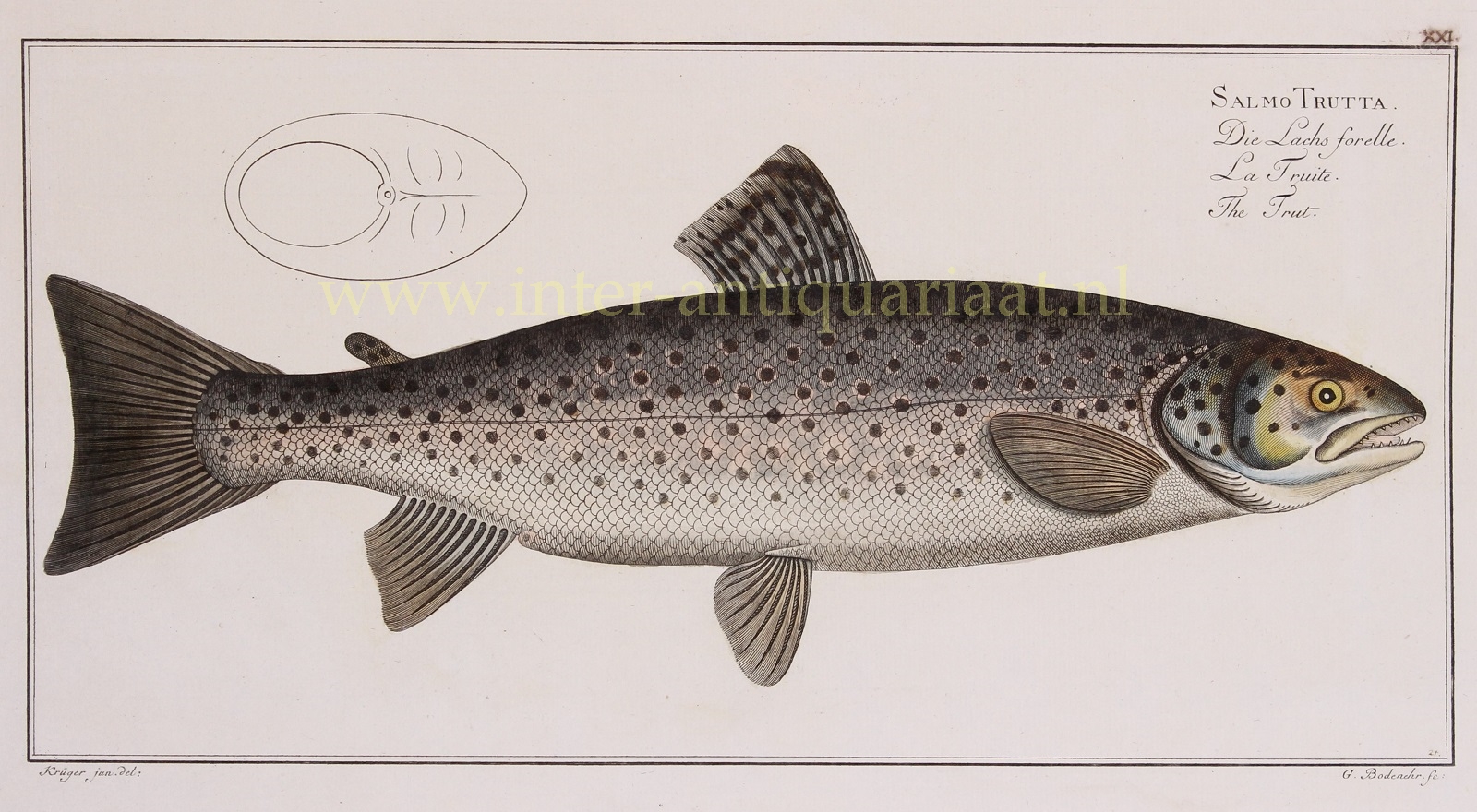THE BROWN TROUT
“Salmo Trutta/Die Lachsforelle/La Truite/The Trut” (plate 21), copper engraving made by Gabriel Bodenehr after the drawing of Krüger jr, for Markus Elieser Bloch‘s “Allgemeine Naturgeschichte der Fische” published in Berlin between 1782 and 1795. With original hand colouring. Size: 19 x 38 cm.
Bloch devoted a significant part of his life to his “Allgemeine Naturgeschichte der Fische,” which is considered to have laid the foundations of the science of ichthyology. The publication was well-received and widely subscribed, leading to five editions in German and French. Bloch made little or no alteration in the systematic arrangement established by Peter Artedi and Carl Linnaeus, although he was inclined to modify the classification based on the structure of the gills. He found it necessary to add 19 new genera and described 276 species previously unknown to science, many of which were found in remote ocean regions and were popular for their bright colors or unique shapes.
Salmo Trutta is a species of fish in the salmon family Salmonidae. It is commonly known as the brown trout and is native to Europe and Asia. Brown trout are a highly adaptable species that can be found in a variety of habitats, including freshwater streams, rivers, and lakes, as well as in the sea. They are known for their ability to tolerate a wide range of water temperatures and conditions.
Brown trout are predatory fish that feed on a variety of prey, including insects, small fish, and crustaceans. They have a distinctive appearance, with a speckled brown or olive back, pale yellow or silver sides, and a white belly. They are popular game fish and are sought after by anglers for their fighting ability and delicious flesh. Brown trout are also an important species for commercial fishing and aquaculture, and are widely cultured for food and recreational purposes.
Bloch is considered the most important ichthyologist of the 18th century.
Price: Euro 350,-


